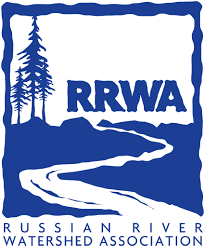Fertilizer is food for plants that need a variety of nutrients to grow and thrive. While we humans get our nutrients from different foods we eat, plants get most of their nutrients from the soil. Sometimes soils don’t have the nutrients necessary for plants to grow and thrive, so we apply chemical fertilizers and animal manure to our gardens and lawns to provide plants with the nitrogen and phosphorus they need. Fertilizer is typically added to the soil to help establish seeds or young plants and may be added to the soil throughout the life of the plant to help keep it healthy. But over-fertilizing can negatively affect aquatic ecosystems.
When nitrogen and phosphorus are not fully utilized by the growing plants, the excess nutrients are washed into our waterways during rain events resulting in nutrient pollution and causing excessive algae growth. Nutrient-rich runoff causes algae to grow faster than waterway ecosystems can handle, which can lead to Harmful Algae Blooms (HABs), such as the blue-green algae we see at Spring Lake Reservoir in Santa Rosa, in the Russian River and in Salmon Creek Lagoon in Bodega Bay. Severe algal growth blocks light that is needed for native aquatic plants to grow.
When the algae and aquatic plants die, they decay, which uses up oxygen in the water. Excessive oxygen depletion can lead to illness and death in fish and other aquatic animals. Some algal blooms are also harmful to humans because they produce elevated toxins and bacterial growth that can make people sick if they encounter polluted water or consume tainted fish or shellfish. Any type of fertilizer can cause algae blooms, whether it’s organic or inorganic, manure or bone meal, applied on a lawn, an agricultural field or a golf course, too much of it is harmful to our waterways.
This quick guide provides a visual comparison of appearance and color and odor that can be helpful in distinguishing non-toxic green algae and aquatic plants from potentially toxic cyanobacteria blooms or harmful algal blooms (HABs). https://mywaterquality.ca.gov/habs/what/visualguide_fs.pdf
Visit Sonoma County Environmental Health Website for more information:
- https://sonomacounty.ca.gov/Health/Environmental-Health/Water-Quality/News/Blue-Green-Algae-Caution-Signs-Posted-June-28-2020/
- https://sonomacounty.ca.gov/Health/Environmental-Health/Water-Quality/Blue-Green-Algae/
How to Be Fertilizer Savvy
What might not be obvious, is that the soil may already have enough nutrients for plants to be strong and healthy. New lawns or areas with very poor soils might lack nutrients, but most established lawns need very little fertilizer. If you do need to fertilize your lawn and/or garden, there are easy actions you can take to minimize the impacts on our waterways:
- Make sure to only use the type and amount of fertilizer your lawn and plants need. A soil test can help. Visit http://www.rrwatershed.org/resource-library/ for a list of local soil and compost testing laboratories.
- Take the time to properly apply lawn fertilizer. Be sure the spreader being used is designed for lawn fertilizer application and that it is calibrated for the type of fertilizer being used.
- Avoid applying fertilizer between late autumn and late winter. Lawns and other plants are unable to use nutrients once they go dormant for the season.
- Ask questions if a lawn care company applies fertilizer to your lawn. Most universities recommend three to four fertilizer applications during the growing season, while some lawn care companies will make six to seven applications during the growing season.
- Of course, there is another option: Don’t fertilize at all. You can have a healthy lawn by opting not to fertilize. By leaving lawn clippings on the lawn to decompose, valuable nutrients are returned to the soil. Mowing at a taller height (3-3.5 inches) can also reduce pest problems, such as weeds, insects and diseases.
- Encourage year-round ground cover. Plant perennial species to minimize bare ground in your yard during winter and spring when soil (and the nutrients it contains) is most susceptible to erosion and loss into waterways.
- Never overwater. Overwatering a yard is a common practice among homeowners and landscaping services and can lead to fertilizer being washed away more easily.
What Else Can We Do?
Residential areas can be a significant source of excess nutrient pollution. In addition to yards and gardens, our appliances and even pets contribute to nutrient pollution. Roadside storm drains lead directly to local streams and rivers, so anything that flows into them makes it to local waterways without treatment.
- Dispose of pet waste properly by putting it in the trash can. Pet waste contributes nitrogen, phosphorus, parasites and bacteria to water bodies when it is not disposed of properly. For more information, visit www.rrwatershed.org/we-need-you-to-pick-up-the-poo .
- If you have unwanted fertilizers, dispose of them through your local Household Hazardous Waste (HHW) Programs offered by Zero Waste Sonoma and MendoRecycle.
- Choose phosphate-free detergents, soaps and household cleaners. Many laundry, dish and car washing soaps contain phosphates, which are carried from our homes into the water system through our drains.
- Select the proper load size for your washing machine, and only run your dish washer when you have a full load. It’s important to use the appropriate amount of detergent; more is not better.
- If you have a septic system, inspect it annually and maintain it as recommended.
- If you see wastewater surfacing from a septic or sewer system, repair or report it to the appropriate authorities as soon as possible.
- Visit Russian River Watershed Association’s Russian River Friendly Landscape Program Guidelines at www.rrwatershed.org/project/rrflg.
- Visit Our Water Our World for other important information and helpful tips on how to keep our creeks and river clean at http://ourwaterourworld.com/Quick-Links/Caring-For-Our-Creeks








